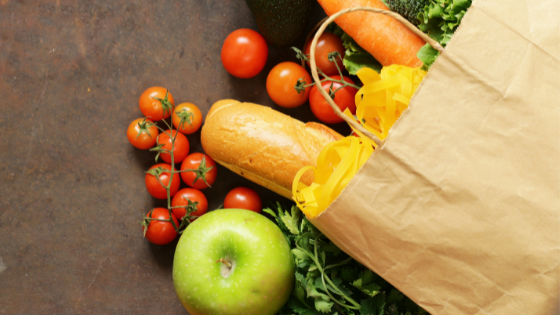
Getting a handle on food affordability
April 11, 2022
By John Jamieson
Talk of rising food prices has gone from news reports to dinner-table conversations. Whatever walk of life you come from, the price of food is on your radar. Food costs are higher across the supply chain from grower to grocer, but amid the stark facts, there is something to be thankful for – Canada has one of the best food systems in the world and as consumers, we are resilient.
We have heard the news reports telling us the same basket of food this year could cost families nearly $1,000 more than last year. How did we get here? The truth is our reality reads like a work of fiction. The perfect storm of a longstanding labour shortage, a once-in-a-century pandemic, the impact of climate change on crop yields, rising gas prices and the Russian invasion of Ukraine have caused food inflation rates to rise dramatically.
As if those events are not enough to contend with, the recent labour dispute at CP Rail has shown how fragile Canada’s distribution network can be. Steep fertilizer prices, a feed shortage and unpredictable weather patterns are putting even more pressure on farmers.
We have not seen food inflation this high since the 1980s. It was even worse in the 1970s when food inflation was in the double digits. What Canadians did then was adopt new consumer habits. What we are seeing now is growth in value-based grocery stores that are focused on price instead of the shopping experience. We will all have to adjust our food-spending habits in the short term, but there is so much more consumers can do to support food affordability in the long-term, which has far-reaching benefits.
One of the leading causes of greenhouse gases produced within the food system is food that is grown and not consumed. As we see rising food prices, we need to think about what we can do as individuals to reduce our food loss. We can try to match our consumption with our purchases. If we find ourselves with food we know we will not consume, we can ask ourselves if there is an opportunity to donate our excess.
About 60 per cent of the food households throw away is edible. Someone else could be eating a meal. The average household spends $1,700 each year on wasted food. We can do better.
Canada plays an enormous role in the global food system. For instance, we ranked fourth in the world in wheat exports last year. Russia and Ukraine account for 35 per cent of global wheat production; that crop is going to be severely reduced this year due to the war.
Food security means having reliable access to nutritious and affordable food, and we have seen how easily it can be thrown off course by war, extreme weather, labour shortages and disruptions, and supply-chain bottlenecks. To help ensure our food security, we must keep our rich agricultural land in production and hold onto our ability to process and distribute the food we grow. Our food sovereignty is part and parcel of food affordability.
We have an enviable food system in Canada. We grow food for ourselves and export the surplus around the world. We need to maintain our ability to do that and make a conscious effort to increase our food-processing capability. We can do that not only by protecting our fertile agricultural land but also by supporting technologies that make us more efficient and support food affordability. Our sustainable practices must not hurt our production.
Food affordability is a conversation that is taking place on a personal, national and global level. As consumers, we must not only keep talking about it but also develop habits that support it.
John Jamieson is the president and CEO of the Canadian Centre for Food Integrity.